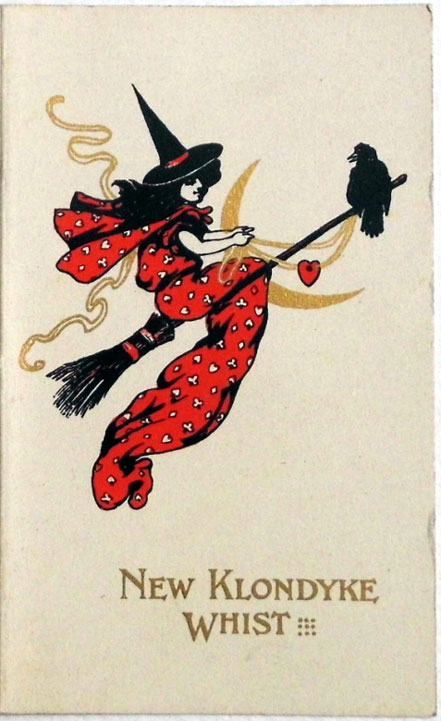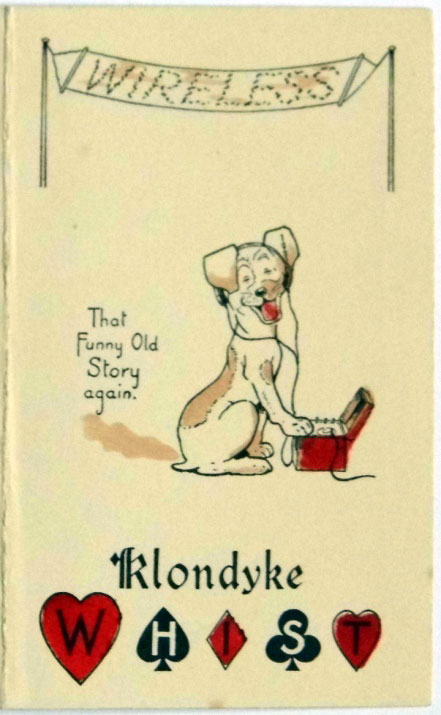Progressive Whist Cards
There are references to “progressive whist” or “whist drives” during the 19th and early years of the 20th century but this form of the game came into its own during the 1920s and 30s.
by Tony Hall
There are references to “progressive whist” or “whist drives” during the 19th and early years of the 20th century, but this form of the game was to come into its own, and become a major social event during the 1920s and 30s. It was an ideal opportunity for groups of like-minded people to socialise and to demonstrate their card –playing skills. For some, it was evidently taken very seriously; for many others it was an excuse for socialising and fun.
Reflecting and encouraging this trend, stationery manufacturers (and in particular Goodall & Son) were quick to produce score cards to facilitate progressive whist occasions. Hundreds of cards were produced in a wide range of styles. My own collection numbers 200 or so different cards and these just scratch to surface of a social trend which was hugely popular between the wars. The many examples below range from the early twentieth century to the 1970s. It is still possible to buy new ones today. Most are impossible to date accurately except by reference to the design and the social context in which they were made and sold. Consequently it is possible to see that the vast majority were produced during the social upheavals of the 1920s and 30s when “progressive” forms of Whist and Bridge were most popular.
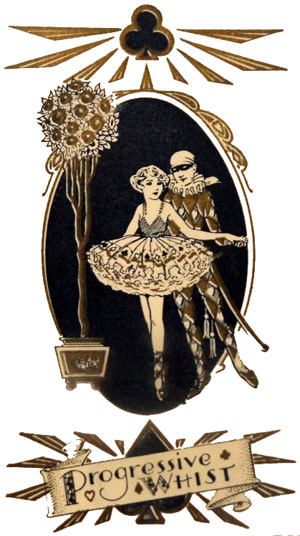
All the items needed for a successful occasion were available commercially. Here is a set of stylish table cards for a 12 table encounter, together with a rather formal invitation card.
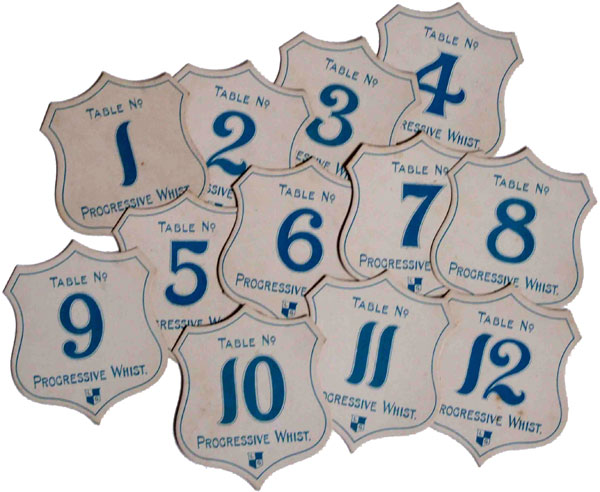
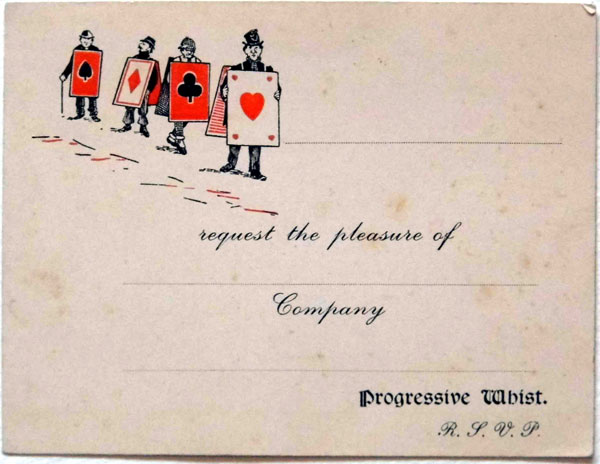
There were many variations in style, from the very Victorian to the trendier, more “modern” variety. All offered simple round by round straight scoring, with partnerships moving after each hand in a pre-determined pattern. Books were published from the 1870s onwards advising on the best forms of progression from table to table.
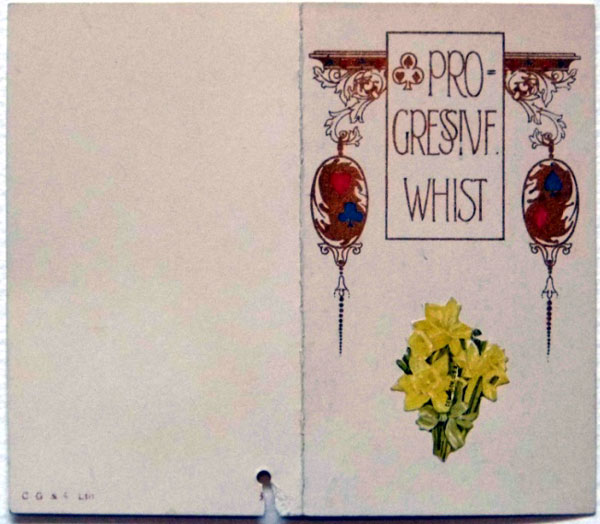
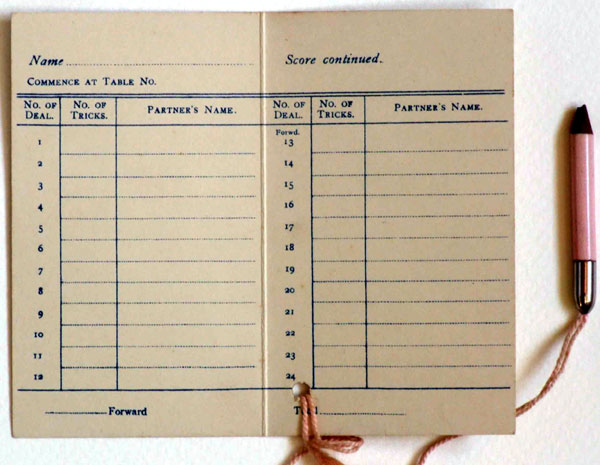
Cards typically offered up to 24 hands, with an attached pencil to enable players to keep a record of their various partners as the evening progressed.
They were available in boxes. Chas. Goodall & Son were major producers in huge variety. This classic set contains the rules, 12 cards, 12 pencils.
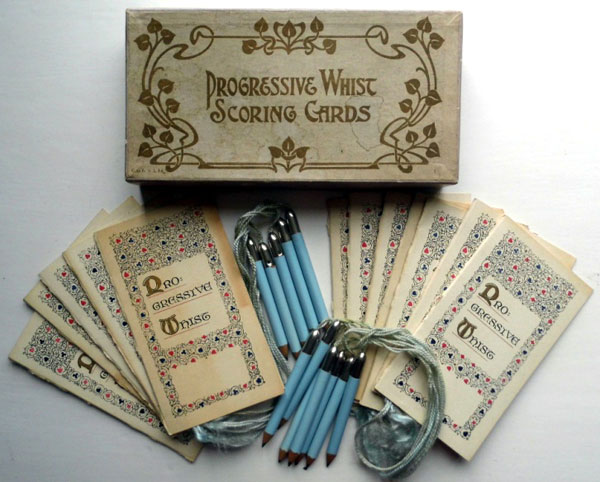
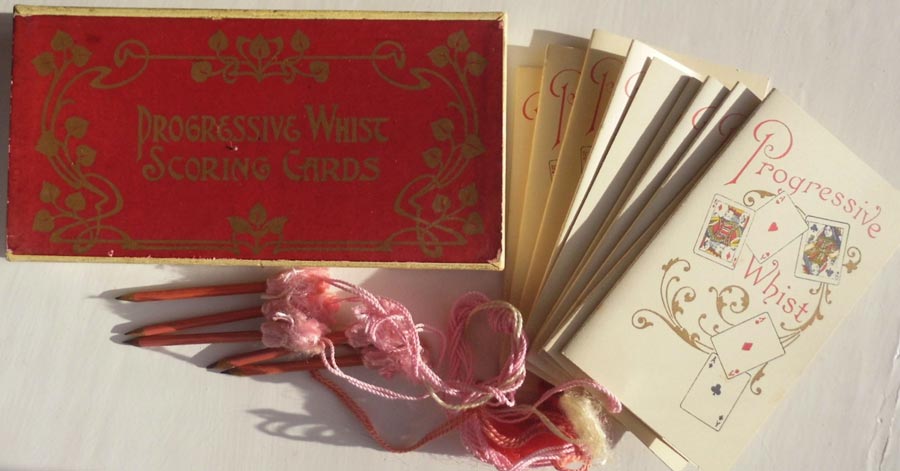
The designs were legion:
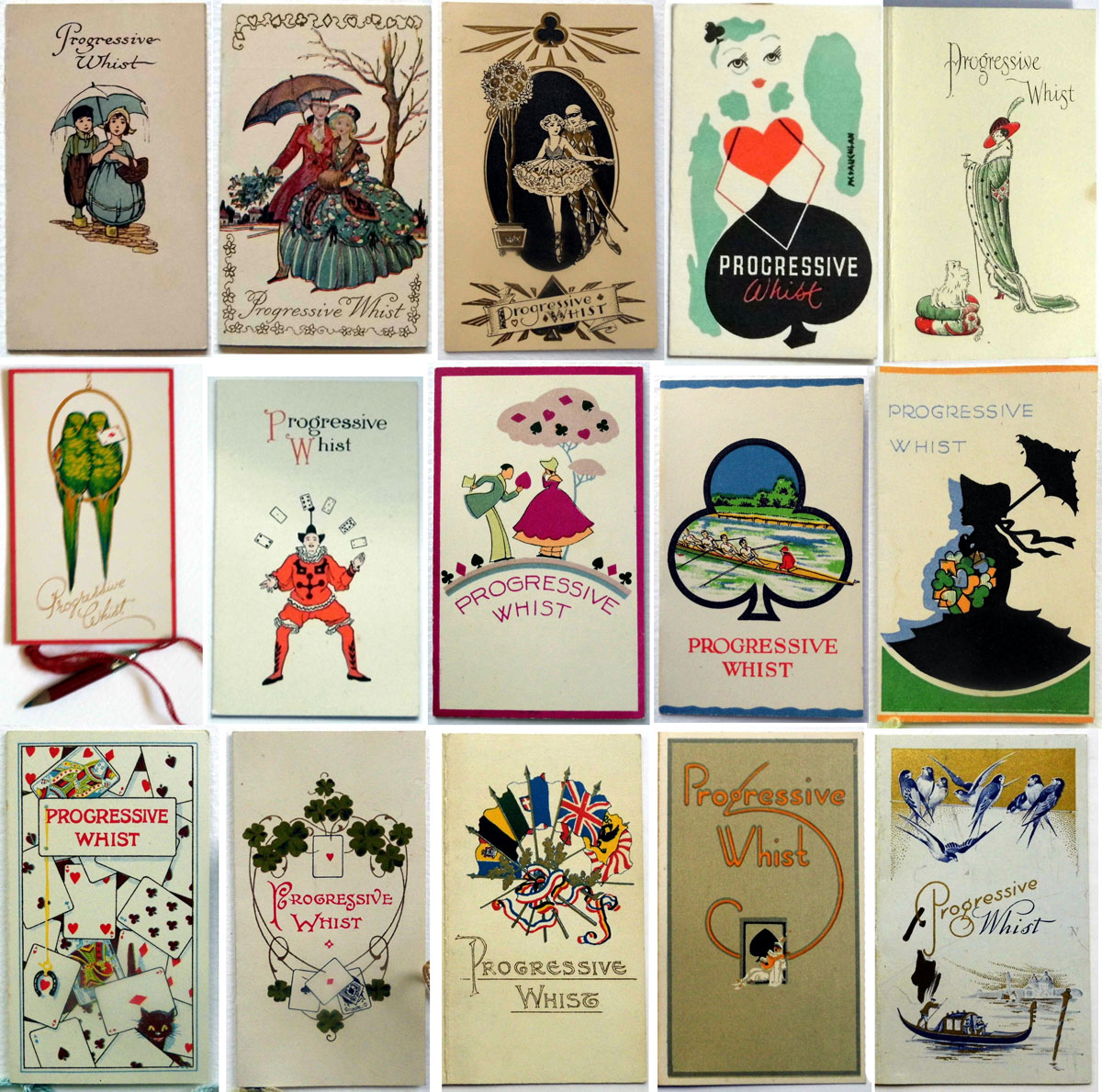
and literally hundreds more in a wide variety of styles.
This one is interesting because it appears to have been commissioned for a particular event, backprinted with the names of the donors and sponsors:
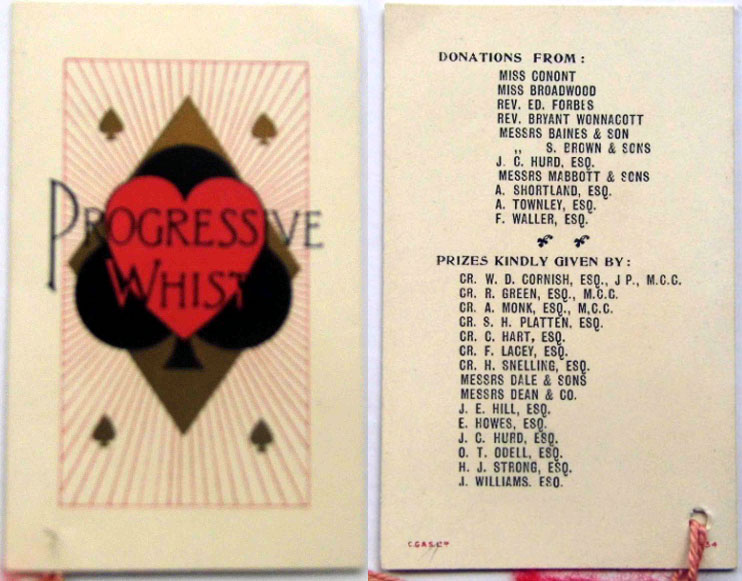
And this variant suggests a “Social Class” reference...
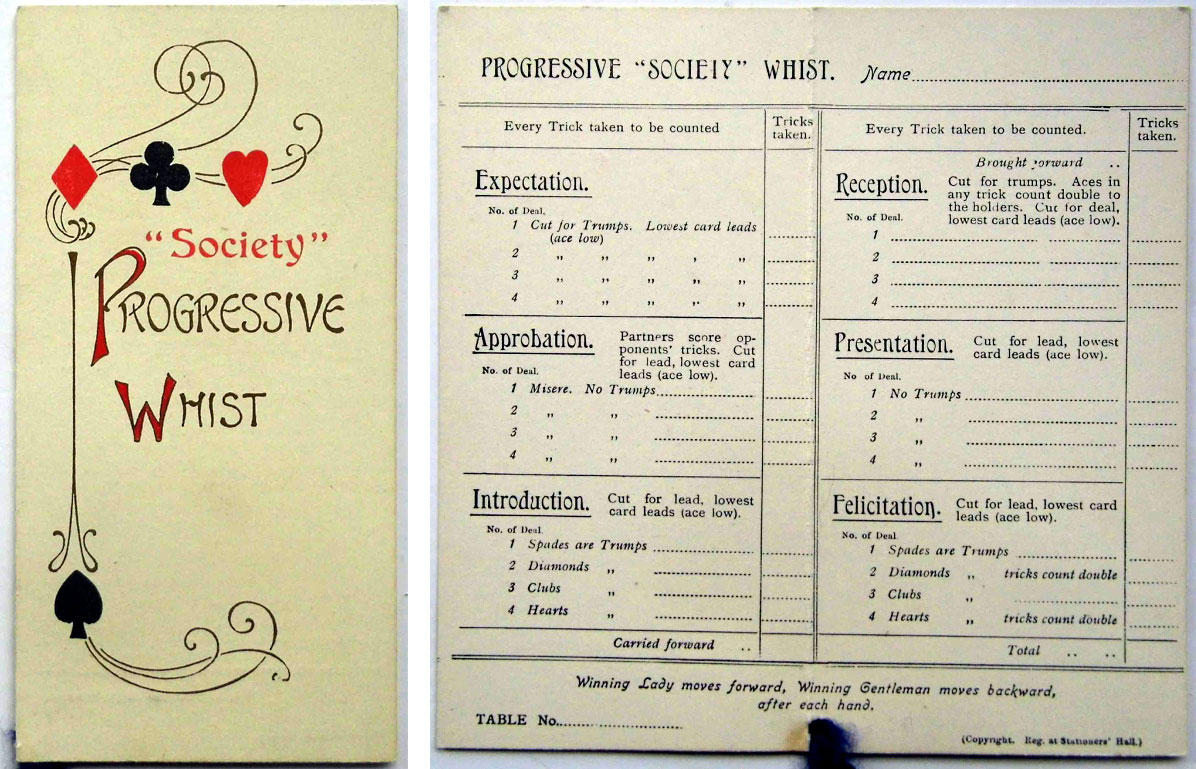
Once Progressive Whist became popular, a range of variations were developed to maintain or increase the interest. One advert for “Golf Whist” (dated 1909) gives a clue as to the appeal of such variants. It reads: “Golf Whist is a modification of the Progressive Whist scoring cards to give the game the sporting interest of golf... The main principle... is that the first 18 rounds are treated as the ‘holes’ in a golf course and the lowest score for the ‘round’ ... gets the Golf Prize. It will be found that the new element causes much merriment, and that it is some consolation for a poor score at any table to be regarded as a good Golf score.” Whist was being promoted as more for fun than for the classical skills of serious play.
The variations were popular and almost endless.
CRAZY Whist introduced minor changes in each round as the game progressed.
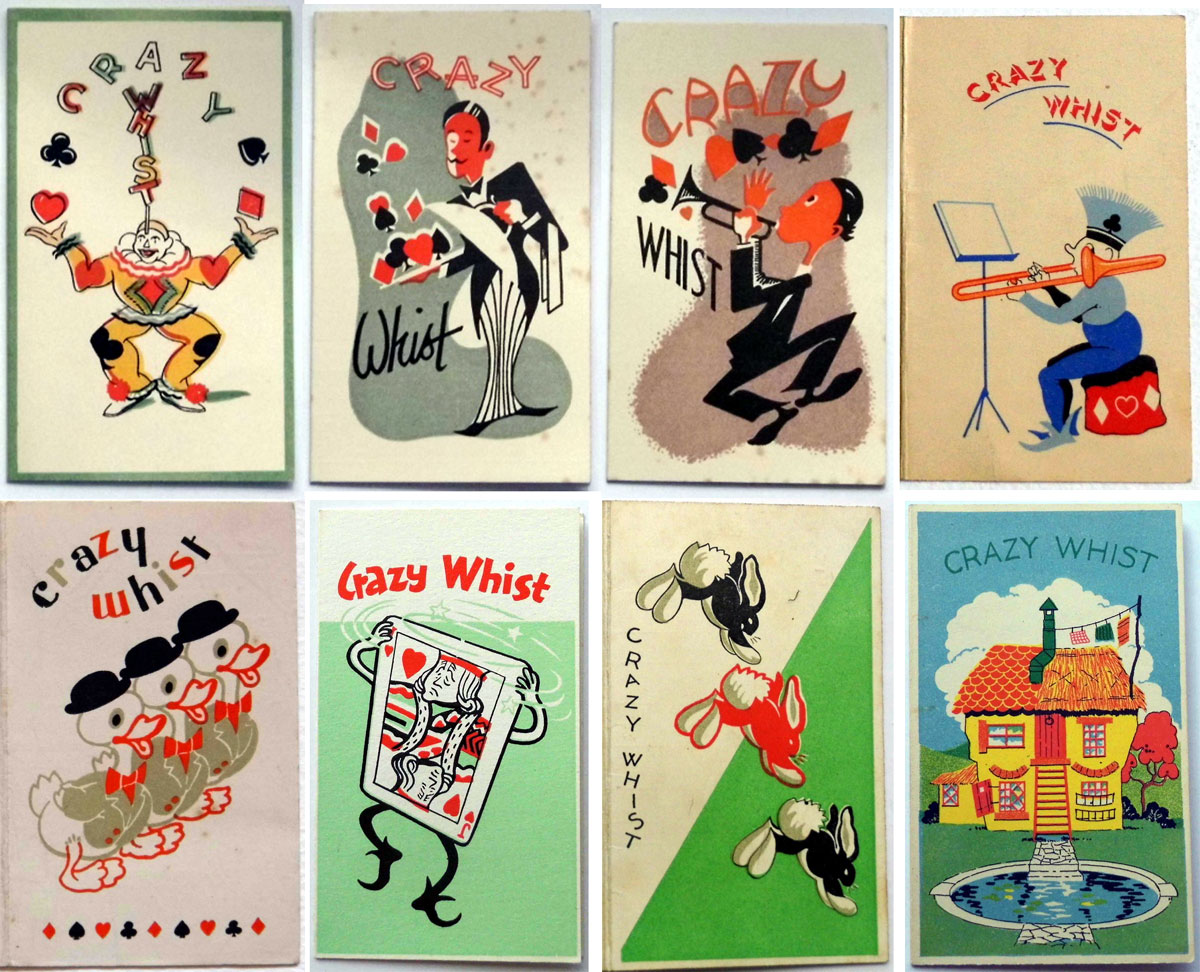
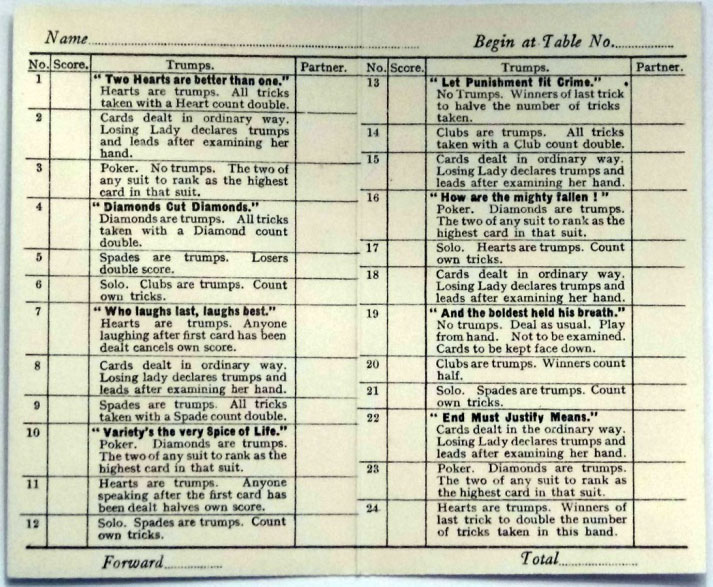
There were many other variants, all seeking to add something to the standard progressive game. Each with their own scoring variations as players moved from one table to the next.
There was Klondyke:
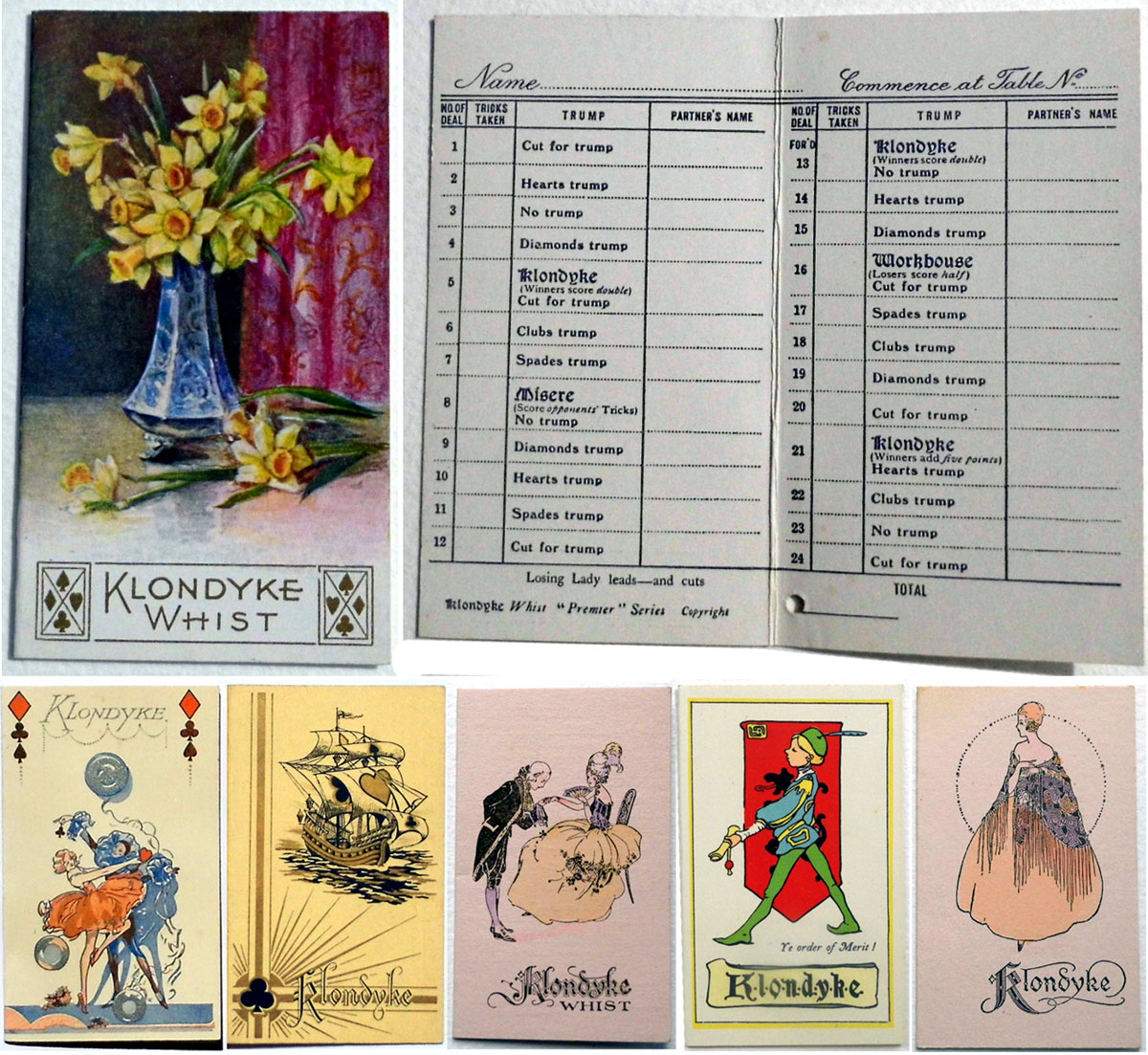

By Tony Hall
United Kingdom • Member since January 30, 2015
I started my interest in card games about 70 years ago, playing cribbage with my grandfather. Collecting card game materials started 50 years or so later, when time permitted. One cribbage board was a memory; two became the start of a collection currently exceeding 150!
Once interest in the social history of card games was sparked, I bought a wooden whist marker from the 1880s which was ingenious in design and unbelievably tactile. One lead to two and there was no stopping.
What happened thereafter is reflected in my articles and downloads on this site, for which I will be eternally grateful.

Related Articles
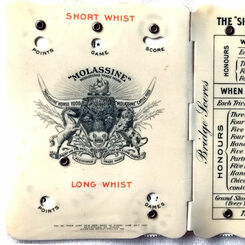
The Molassine Company and its link to Whist and Bridge
A savvy marketing strategy blending Victorian decorative design with Edwardian practicality.

Double Dummy Bridge
In the early 20th century several firms began to promote whist or bridge as a game for two.
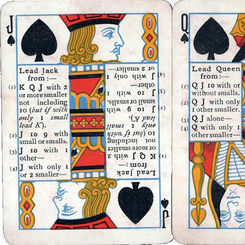
Scientific Whist
“Scientific Whist” : standard cards with instructions for play on the faces by Chas Goodall & Son, 1...

Card Game Items and contemporary advertisements
It is often difficult to identify the origin, manufacturer and date of a card game boxed set and oth...

De La Rue Pocket Guides
The 19th Century saw the production, by all of the major companies, of pocket guides or “mini-books”...

A New Look at the Evolution of Whist Markers and Gaming Counters
This article aims to illustrate the evolution of whist and gaming counters from the 18th century to ...

Whist writers and their pseudonyms
Why did so many early writers about whist and other card games feel the need to write under a pseudo...

Whist marker boxes
The Camden Whist marker was being advertised by Goodall and son in 1872 as a new product.

Bridge Markers and bridge scoring methods
Bridge Markers and bridge scoring methods 1900-1930

Foster’s Self-Playing Whist Cards
In 1890 R. F. Foster published the first edition of “Foster’s Whist Manual” which was to become the ...
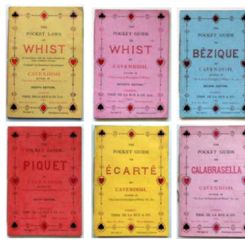
The Personalities and Books which shaped the game of Whist, 1860-1900
All the books described here are from Tony Hall's own collection, put together over years because of...
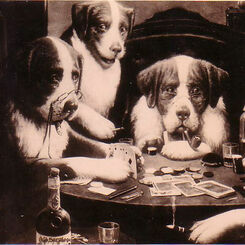
Majority Calling and Value Bidding in Auction Bridge; a little bit of history
The centuries-old game of Whist mutated through various stages into Contract Bridge as we know it to...
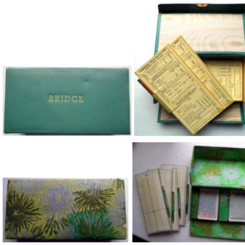
The Evolution of Whist and Bridge Boxed Sets, 1870s – 1930s
Boxed sets of cards, markers, scorers and rule booklets have been around for many decades. Some of t...

Bezique Markers, 1860-1960
Bezique is a two-player melding and trick-taking game. Dr. Pole introduced Bezique to England in 186...
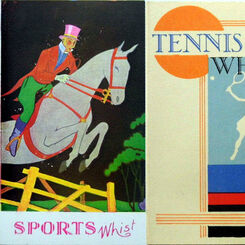
Progressive Whist Cards - page 3
There were various Sports and Sporting Whist themes... and tobacco advertising on score cards.
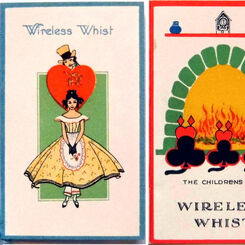
Progressive Whist Cards - page 2
Wireless Whist itself, in many forms...

Canasta
Canasta is a card game of the Rummy family which originated in Uruguay probably about 1947.
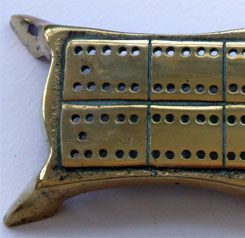
Cribbage Board Collection part 4
A collection of antique and vintage Cribbage Boards by Tony Hall, part 4.
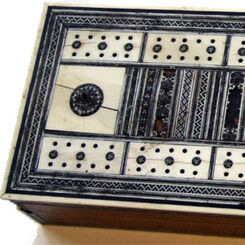
Cribbage Board Collection part 2
A collection of antique and vintage Cribbage Boards by Tony Hall, part 2

History and Evolution of Spades
History and Evolution of Spades
Most Popular
Our top articles from the past 60 days



